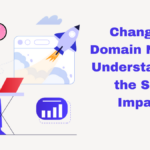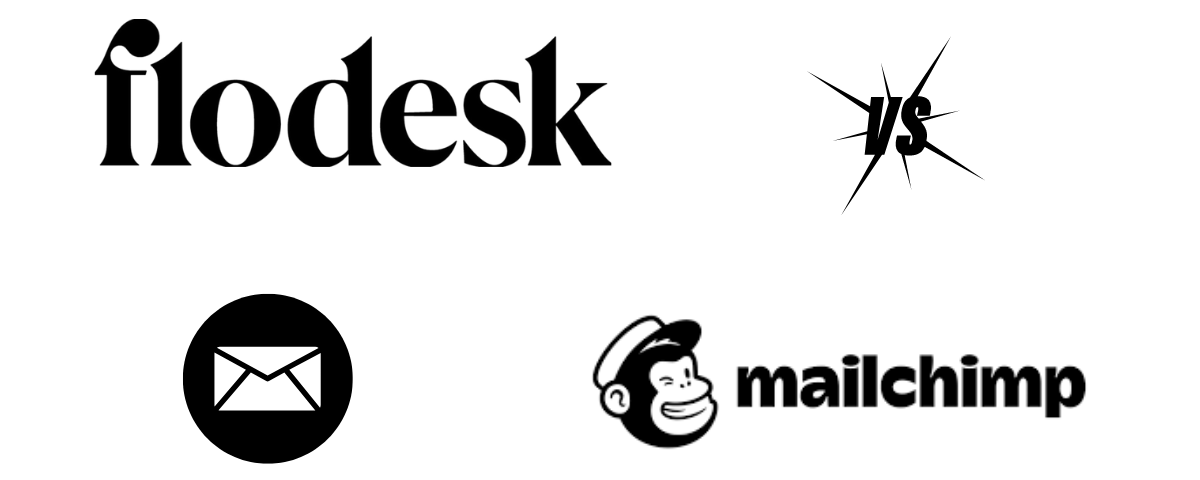
The Significance of Contextual Links in SEO
May 3, 2024
Changing Domain Name SEO Impact.
June 3, 2024Email marketing – Flodesk vs Mailchimp: What’s Best For You?

When it comes to email marketing, two names often come up: Flodesk and Mailchimp. Both are popular platforms with their unique features, but which one is right for you? This article will dive deep into the nitty-gritty of both platforms, comparing their strengths, weaknesses, and everything in between to help you make an informed decision.
Overview of Email Marketing Platforms
Email marketing remains a powerhouse in the digital marketing realm. It’s personal, direct, and can yield impressive ROI if done right. But, the success of your email marketing efforts largely depends on the platform you choose.
The Importance of Email Marketing
Email marketing is crucial for building relationships with your audience. It allows you to communicate directly, promote your products or services, and provide value through content. But, to achieve this, you need a reliable email marketing platform.
What is Flodesk?
Flodesk is a relatively new player in the email marketing space, but it’s quickly gaining traction, especially among small businesses and creative entrepreneurs.
Features of Flodesk
Flodesk offers an array of features designed to simplify email marketing:
- Drag-and-Drop Email Builder: Easy to use with no coding required.
- Beautiful Templates: High-quality, visually appealing templates.
- Automation: Create automated workflows to save time.
- Unlimited Subscribers: No limits on the number of subscribers.
Pros and Cons of Flodesk
Pros:
- User-friendly interface.
- Stunning design templates.
- Flat-rate pricing.
Cons:
- Limited integrations.
- Fewer advanced features compared to competitors.
What is Mailchimp?
Mailchimp is one of the oldest and most established email marketing platforms available today, offering a comprehensive suite of tools.
Features of Mailchimp
Mailchimp is known for its robust feature set:
- Advanced Analytics: Detailed insights and reporting.
- Wide Range of Templates: Extensive library of email templates.
- Comprehensive Automation: Sophisticated automation options.
- Integration Options: Integrates with a multitude of third-party apps.
Pros and Cons of Mailchimp
Pros:
- Rich in features.
- Extensive integrations.
- Scalable for businesses of all sizes.
Cons:
- Can be complex for beginners.
- Pricing can get expensive.
Ease of Use
Flodesk’s User Interface
Flodesk prides itself on its simplicity and ease of use. The drag-and-drop editor is intuitive, making it perfect for those who want to create beautiful emails without a steep learning curve.
Mailchimp’s User Interface
Mailchimp, while feature-rich, can be overwhelming for new users. Its interface has improved over the years, but it still requires some time to get used to, especially for those new to email marketing.
Design and Customization
Flodesk’s Design Capabilities
Flodesk stands out with its emphasis on design. The templates are visually stunning and customizable, allowing users to create emails that align with their brand aesthetics effortlessly.
Mailchimp’s Design Capabilities
Mailchimp offers a wide variety of templates and customization options. While it might not match Flodesk in visual appeal, it provides more flexibility for those who need advanced customization.
Automation Features
Flodesk’s Automation
Flodesk’s automation features are straightforward and easy to set up. It allows users to create simple workflows to automate email sequences, which is great for small businesses.
Mailchimp’s Automation
Mailchimp excels in automation, offering advanced options that can handle complex workflows. This makes it suitable for larger businesses with more sophisticated needs.
Pricing Plans
Flodesk’s Pricing
Flodesk offers a simple, flat-rate pricing model. For $38 per month, you get unlimited subscribers and emails, which can be very cost-effective for growing businesses.
Mailchimp’s Pricing
Mailchimp’s pricing is tiered based on the number of subscribers and features. While it offers a free plan, the costs can escalate quickly as your list grows and you need more advanced features.
Customer Support
Flodesk’s Customer Support
Flodesk offers customer support via email and a comprehensive help center. However, it lacks live chat or phone support, which might be a downside for some users.
Mailchimp’s Customer Support
Mailchimp provides multiple support channels, including email, chat, and phone support (for premium users). Their extensive knowledge base is also a helpful resource.
Integrations
Flodesk’s Integrations
Flodesk currently offers fewer integrations than Mailchimp. It covers the basics but might fall short for users who rely on a wide range of third-party apps.
Mailchimp’s Integrations
Mailchimp integrates with many apps and services, making it a versatile choice for businesses that use multiple tools in their marketing stack.
Deliverability Rates
Flodesk’s Deliverability
Flodesk has a good deliverability rate, ensuring that your emails reach your subscribers’ inboxes. However, being newer, it might not have the same established reputation as Mailchimp.
Mailchimp’s Deliverability
Mailchimp is known for its high deliverability rates, thanks to its long-standing presence and adherence to best practices in email marketing.
Analytics and Reporting
Flodesk’s Analytics
Flodesk provides basic analytics that covers essential metrics like open rates and click rates. While sufficient for small businesses, it lacks the depth offered by Mailchimp.
Mailchimp’s Analytics
Mailchimp offers advanced analytics and reporting features. Users can track a wide range of metrics, conduct A/B testing, and gain deeper insights into their campaigns’ performance.
Who Should Use Flodesk?
Ideal Users for Flodesk
Flodesk is ideal for small businesses, creative entrepreneurs, and individuals who prioritize design and simplicity over advanced features. Its flat-rate pricing makes it particularly attractive for growing businesses.
Who Should Use Mailchimp?
Ideal Users for Mailchimp
Mailchimp is suitable for businesses of all sizes, especially those that need a comprehensive set of features and advanced automation. It’s a great choice for larger organizations and those who require extensive integrations.
Conclusion
Choosing between Flodesk and Mailchimp depends on your specific needs and preferences. If you value beautiful designs and simplicity, Flodesk might be the perfect fit. On the other hand, if you need a robust, feature-rich platform with advanced automation, Mailchimp could be the better choice. Assess your business needs, budget, and technical expertise to make the best decision.
FAQs
What is the main difference between Flodesk and Mailchimp?
The main difference lies in their focus: Flodesk emphasizes design and simplicity, while Mailchimp offers a comprehensive feature set with advanced automation and integrations.
Is Flodesk suitable for large businesses?
Flodesk can be used by large businesses, but it is primarily designed for small to medium-sized enterprises and creative entrepreneurs.
Can I switch from Mailchimp to Flodesk easily?
Yes, switching from Mailchimp to Flodesk is straightforward. Both platforms offer guides and support to help with the transition.
Which platform offers better templates?
Flodesk is known for its beautiful, high-quality templates, while Mailchimp offers a wider variety with more customization options.
How do the pricing plans compare?
Flodesk offers a flat-rate pricing model, while Mailchimp has tiered pricing based on the number of subscribers and features required.



